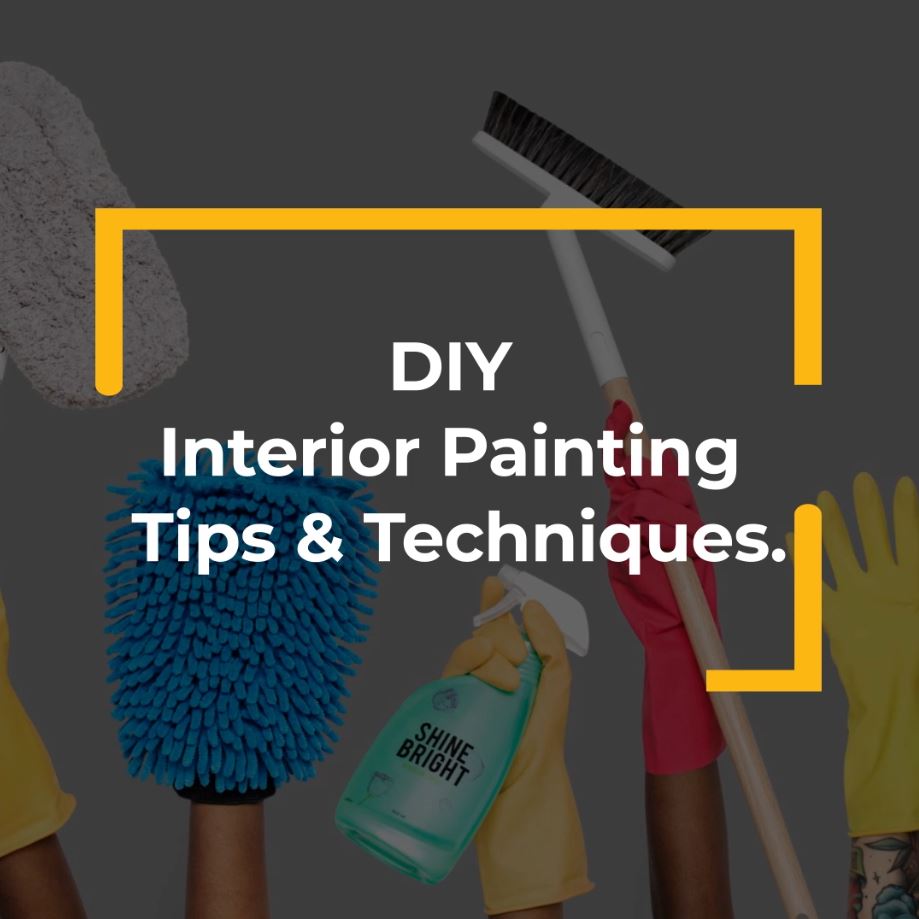Painting is a simple process that can be done using the Do-It-Yourself tips and techniques below:
STEP 1- Prepare the surface
Properly preparing the surface before painting is crucial. Clean the walls or other surfaces thoroughly to remove any dirt, dust, or grease. Repair any cracks or holes and sand them smooth. Use painter’s tape to protect areas you don’t want to paint, such as trim, windows, or switches.
STEP 2 -Choose the right paint
Consider the type of surface you’re painting and choose the appropriate paint. There are different types of paint for walls, wood, metal, and other materials. Look for paints with low VOC (volatile organic compounds) to minimize fumes and ensure better indoor air quality.
STEP 3-Use high-quality tools
Invest in good quality brushes, rollers, and paint trays. Quality tools can make a significant difference in the overall finish and ease of application. Choose the appropriate brush or roller size for the surface you’re painting.
STEP 4-Prime when necessary
Priming is essential for certain surfaces, especially when going from a dark to a light color, or when covering stains. Use a primer designed for the surface you’re painting to ensure better adhesion and coverage of the paint.
STEP 5-Use a drop cloth
Protect your floors and furniture by using a drop cloth or plastic sheeting. This will catch any drips or spills and make cleanup much easier.
STEP 6-Apply paint in thin coats
It’s generally better to apply multiple thin coats of paint rather than one thick coat. This helps to avoid drips, streaks, and uneven coverage. Allow each coat to dry completely before applying the next one.
STEP 7-Maintain a consistent technique
Whether you’re using a brush or roller, try to maintain a consistent technique throughout the project. This will help create an even finish. For example, when using a roller, roll in a “W” or “M” pattern to distribute the paint evenly.
STEP 8-Don’t rush the drying process
Patience is key when it comes to drying. Follow the manufacturer’s instructions for drying times between coats and before removing painter’s tape or repositioning furniture. Rushing the drying process can result in smudges or damage to the finish.
STEP 9-Clean up properly
After you’re done painting, clean your brushes, rollers, and trays thoroughly according to the paint manufacturer’s instructions. Properly dispose of any leftover paint or containers as required by local regulations.
STEP 10-Take safety precautions
Ensure proper ventilation by opening windows or using fans when painting indoors. Wear protective gear such as gloves, goggles, and a mask to protect yourself from fumes or potential splatters.
Remember, practice makes perfect, so don’t be discouraged if your first attempts aren’t flawless. With time and experience, your DIY painting skills will improve. Good luck with your project!

